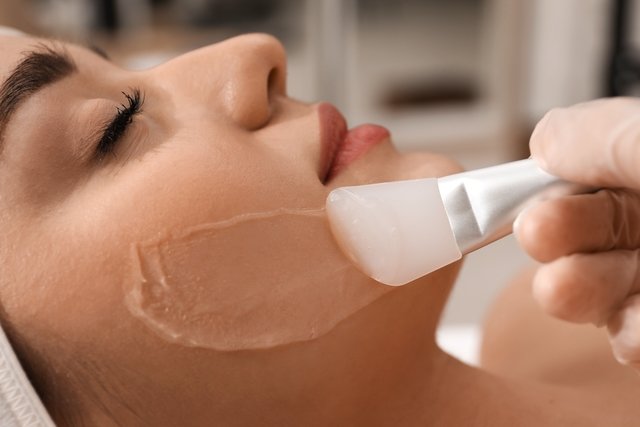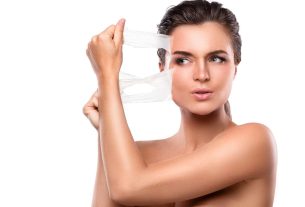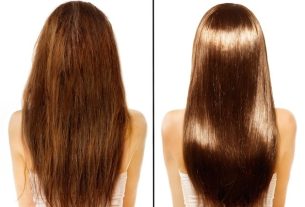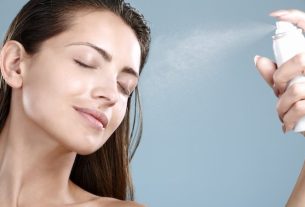Some ways to get rid of holes on your face include skin care, such as washing your face daily, using an astringent toner and applying moisturizer and sunscreen, as well as exfoliating your skin, as they help to unclog pores and increase skin firmness. .
Holes on the face can appear due to the dilation of pores due to the accumulation of oil, causing inflammation and the formation of blackheads, but they can also be caused by acne scars, mainly due to squeezing blackheads or whiteheads.
These tips can be used to help get rid of holes on your face, however, it is recommended to consult a dermatologist who can recommend aesthetic treatments, such as peeling chemical or microneedling, for example.

12 ways to get rid of holes on your face
Some ways to get rid of holes on your face are:
1. Wash your face daily
Washing your face daily is essential to unblock enlarged pores or prevent them from appearing, as it removes excess fat that accumulates on the skin and reduces oiliness.
To wash your face daily, you must wet your face, apply a facial soap, cleansing lotion or soap suitable for oily skin, and use gentle circular movements. Then, rinse under running water and dry with a clean, soft towel.
It is recommended that the face be washed twice a day, morning and night, as more than that can dry out the skin and cause the skin to produce more oil.
2. Apply an astringent facial toner
Applying an astringent facial toner helps remove impurities from the skin that soap cannot eliminate, and in this way, helps to unclog pores and control skin oil, helping to eliminate holes on the face.
To use the astringent toner, apply a few drops to a cotton ball or pad and gently rub it over your face in circular movements. No need to rinse.
Astringent tonics can be found in pharmacies and generally contain substances such as salicylic acid, calendula or tea tree oil, and therefore, ideally, they should be recommended by a dermatologist, according to the characteristics of the skin.
3. Keep your skin hydrated
Keep your skin hydrated by applying non-greasy moisturizers or oil free daily, after using the astringent toner, it helps to reduce enlarged pores and eliminate holes on the face.
Moisturizers typically contain substances, such as glycolic acid, hyaluronic acid or retinol, which promote deep skin hydration, cell renewal and collagen production, leaving the skin more uniform and smooth.
In addition to moisturizing creams, you should drink at least 2 liters of water per day, as it helps keep your skin hydrated.
4. Apply sunscreen daily
Applying non-greasy sunscreen daily, with at least SPF 30, helps control skin oil and damage caused by the sun, which can leave skin sagging and holes more visible.
Therefore, it is recommended to apply sunscreen at least 15 minutes before leaving home, and to use it even on cloudy days.
6. Exfoliate your skin
Exfoliating helps to unclog enlarged pores and keep the skin healthier and cleaner, as it stimulates blood circulation and cell renewal, leaving the skin smoother and more uniform, and preventing the appearance of blackheads and pimples.
Exfoliation can be done 1 to 2 times a week, with physical exfoliants, which have microspheres, or chemical exfoliants, such as alpha hydroxy acids, glycolic or lactic acid, for example.
Additionally, some physical exfoliants can be made at home, such as the oatmeal and honey exfoliant or the cornmeal and coconut oil exfoliant, for example. See how to prepare face scrubs.
7. Consume foods rich in collagen
Increasing the consumption of foods rich in collagen increases the elasticity, hydration and firmness of the skin, helping to smooth out holes in the face caused by scars from pimples or blackheads.
Some foods rich in collagen are red meat, chicken, fish or gelatin, for example. See the complete list of foods rich in collagen.
Furthermore, another way to consume more collagen is through collagen supplements, which can be found in pharmacies or drugstores and should be used under the advice of a dermatologist. See how to take a collagen supplement.
8. Microneedling
Microneedling is an aesthetic treatment that uses very fine micro-needles that stimulate the formation of collagen, helping to eliminate holes in the face caused by enlarged pores or acne scars.
This type of treatment can be done at home or in an aesthetic clinic, by a dermatologist or a qualified professional. Find out how to do microneedling at home.
9. Peeling chemical
O peeling Chemical is an aesthetic treatment carried out by a dermatologist recommended to reduce scars caused by acne and eliminate holes on the face.
This type of treatment consists of applying trichloroacetic acid or phenol, with the aim of promoting cell renewal and eliminating dead cells, improving the appearance of the skin. See how it’s done peeling chemical.
10. Filler with hyaluronic acid
The application of hyaluronic acid is done by a dermatologist or plastic surgeon, in the office, to eliminate holes on the face due to acne scars.
This type of treatment is done with an injection of hyaluronic acid with the aim of filling in the holes in the face, leaving the skin more uniform and smooth. Learn more about the application of hyaluronic acid.
11. Dermaplaning
Dermaplaning is an aesthetic treatment recommended to minimize acne scars, helping to eliminate holes on the face.
This treatment is carried out by the dermatologist using a scalpel-like blade to scrape the upper layers of the skin and remove dead cells, leaving the skin more uniform, firm, soft and healthy. Find out how dermaplaning is done.
12. Laser
Laser treatment can also be used to eliminate holes in the face caused by pimples, as it helps to improve the appearance and texture of the skin.
This type of treatment removes superficial skin cells, stimulating cell renewal, and is carried out by the dermatologist in the office. Check out all the acne scar treatment options.
When to go to the doctor
It is important to consult a dermatologist in the following situations:
- Aesthetic discomfort;
- Frequent pimples or blackheads;
- Pimples that form cysts, nodules or raised skin.
Therefore, the dermatologist must evaluate the skin, check the characteristics and causes of pimples or enlarged pores, and the presence of acne scars and, thus, recommend the most appropriate treatment. See how acne is treated.
Make an appointment with a dermatologist in the nearest region:
Taking care of your health has never been easier!

Sign up for our newsletter and stay up to date with exclusive news
that can transform your routine!
Warning: Undefined array key "title" in /home/storelat/public_html/wp-content/plugins/link-whisper-premium/templates/frontend/related-posts.php on line 12
Warning: Undefined array key "title_tag" in /home/storelat/public_html/wp-content/plugins/link-whisper-premium/templates/frontend/related-posts.php on line 13



